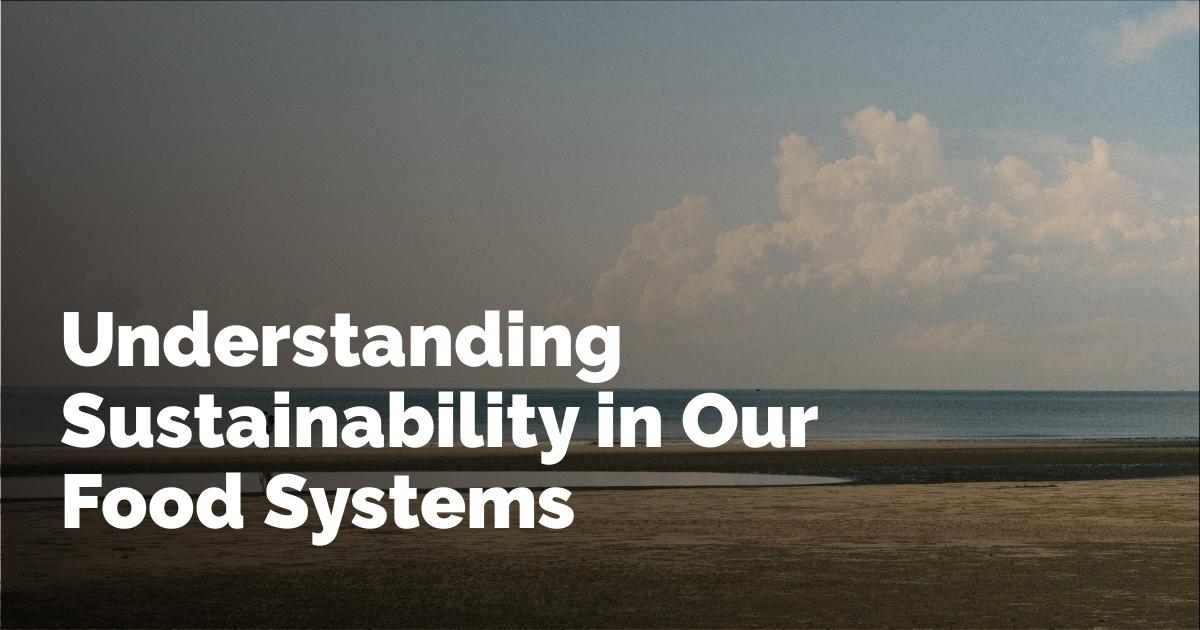Sustainability and Food Systems: An In-Depth Look at Definitions and Implications
Understanding the relationship between sustainability and food systems is crucial as we navigate the complexities of global development. This exploration offers insights into the intricate balance between economic, social, and environmental dimensions that are essential for sustainable development.
Understanding Sustainability
Sustainability is a multifaceted concept often defined by its integration of three core dimensions: economic, social, and environmental. In the context of agriculture, these elements must be harmoniously balanced to achieve lasting and impactful sustainable development.
The USDA's Approach to Agricultural Sustainability
The United States Department of Agriculture (USDA) adheres to definitions of agricultural sustainability that emphasize the integration of key practices and principles. According to the Farm Bills of 1977 and 1990, sustainable agriculture involves a systematic application of plant and animal production practices tailored to specific locations. Over the long term, these practices are intended to:
- Fulfill human needs for food and fiber.
- Enhance environmental quality and the resource base crucial to the agricultural economy.
- Optimize the use of nonrenewable and on-farm resources while integrating natural biological cycles and controls where appropriate.
- Sustain the economic viability of farm operations.
- Improve the quality of life for farmers and broader society.
In 2011, the USDA affirmed its commitment to sustainability across various agricultural, forest, and range systems, focusing on:
- Meeting human needs.
- Enhancing environmental quality, resources, and ecosystem services.
- Maintaining the economic viability of agriculture.
- Bettering the quality of life for stakeholders, including farmers, ranchers, and the wider community.
These goals are incorporated into USDA policies and programs, fueled by partnerships, interagency collaborations, and global outreach efforts. The emphasis on management, production, and distribution systems that are appropriate for specific places and scales is central to USDA's strategy, reflecting a commitment to sustainable practices across all landscapes, supply chains, and markets.
Principles of Efficiency
A key element of USDA's sustainable approach is the promotion of the "reduce, reuse, and recycle" philosophy. This principle applies to the efficient management of products through various stages—handling, processing, transportation, packaging, trade, consumption, and waste management, ensuring minimal environmental impact and maximizing resource efficiency.
Explaining Food Systems
The term "food system" challenges the simplistic concept of a linear journey from farm to table. Instead, it represents a sophisticated network involving numerous inputs and outputs in the context of agricultural production and consumption.
Defining Food Systems
Food systems are dynamic, intricate networks that reflect significant variability depending on geographical and temporal factors. They encompass the entire scope of actions from farm to table, involving production, processing, distribution, consumption, and waste disposal related to food, feed, and fiber.
The USDA's National Agricultural Library defines food systems broadly as "everything from farm to table." This definition underscores the holistic nature of food systems, highlighting the involvement of diverse agricultural producers—whether farmers, ranchers, or fishers—and their interaction with consumers and institutions.
Food Systems and Global Security
One definition adopted by the U.S. in its Global Food Security Strategy presents agriculture and food systems as interconnected units comprising people, behaviors, relationships, and material goods. These components interact across various processes including production, processing, transportation, and consumption through diverse sectors like aquaculture, farming, wild fisheries, forestry, and pastoralism. Notably, these systems are shaped by various social, political, economic, and environmental contexts which impact how they function and evolve.
Other Definitions of Food Systems
UN FAO's Perspective
The Food and Agricultural Organization (FAO) of the United Nations provides a comprehensive definition of food systems, highlighting their multifaceted and interconnected nature. According to the FAO, food systems span the full range of actors and associated value-adding activities. These include production, aggregation, processing, distribution, consumption, and food disposal, each originating from agriculture, forestry, or fisheries. Importantly, food systems also interact with broader economic, societal, and environmental dimensions.
Sustainable Food Systems
A key concept in FAO's definition is the notion of a sustainable food system, which strives to ensure food security and nutrition for all without compromising the economic, social, and environmental foundations necessary for future food security. Key characteristics of a sustainable food system include:
- Economic sustainability: Ensuring profitability across the entire system.
- Social sustainability: Delivering widespread societal benefits.
- Environmental sustainability: Maintaining a positive or neutral environmental impact.
Conclusion
Understanding the comprehensive nature of sustainability and food systems is essential for forming policies and practices that effectively address the challenges of sustainable development. Whether it's through policies that promote efficiency and collaboration or frameworks that foster adaptability to various contexts, recognizing the importance of integrating economic, social, and environmental dimensions remains at the heart of creating a sustainable future. By refining and implementing informed perspectives like those from the USDA and FAO, we carve pathways toward a more sustainable, equitable world.
출처 : Original Source

